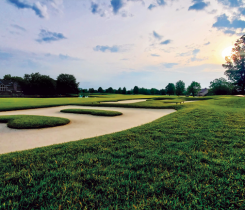Navigating the information overload
With the arrival of the New Year, we always think about things we can change. Here at Golfdom that change is evident with the new look of the magazine. And on a personal note, my profile picture has been updated, which hopefully reflects increasing wisdom and not so much my age.
Golfdom’s change not only in the magazine but also in other functions reflects a more fundamental change that has occurred during the last 20 years on how we gather and analyze information. The free flow of information, primarily electronic information, has changed how we gather and evaluate it.
The electronic changes have been beneficial. For example, blog postings by superintendents and others provide insight into practices and issues we do not find in classical text books.
The posting of photographs across all social media outlets show us golf courses and how they are managed, both locally and globally. Even in 100 years we would not be able to observe on our own all that others have provided to us visually online.
Personally, I do not know how many times I have asked superintendents for permission to use their photographs in class. A lot. With this exponential rise in information — some would call it an overload — it’s hard to determine what is reliable, what is junk and how best to use it all. Two pictures, presumably taken during Hurricane Sandy, have been making their way into social media circles. One of a shark swimming through New York City; the other of soldiers guarding the tomb of the Unknown Soldier at Arlington National Cemetery.
The shark picture (below) was Photoshopped, and the cemetery picture was taken during a different storm. The source of the information is still important and needs to be recognized. Even though we often use Google, the TGIF databank supported by the USGA and Michigan State University is the most reliable source of turfgrass
information.
Determining what some of the information we find on the Web means is challenging because of the sheer volume of it all. Newsweek stopped publishing its weekly hard copy in October, due in a large part to Web dominance. Prior to the Electronic Age, we looked forward to receiving Newsweek and Time every week, when the stories weren’t regurgitated tirelessly. In the Electronic Age, you can find an opinion on any topic every millisecond.
The difficulty in evaluating the information is not the collection but the comprehension, analysis and synthesis of what we have gathered. In other words, we do not apply enough rigor to our information.
Benjamin Bloom, a psychologist at the University of Chicago, laid out the basic framework for learning and the importance of comprehension, analysis, synthesis and application. As his theories apply to golf course management, the gathering of information is the basic step.
For example, determining the diseases on your putting green is considered gathering basic information. A higher level of knowledge could be attained, however, through gathering information from a broad range of sources — then using it to develop a disease management program.
As you begin to gather information that will help you manage your turf in 2013, take the time to really think about the information you have. Use it to devise a sound plan. Then figure out how to implement it.
Karl Danneberger, Ph.D., Golfdom‘s science editor and a professor from The Ohio State University, can be reached at danneberger.1@osu.edu.










